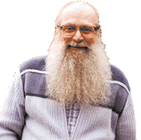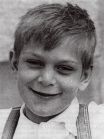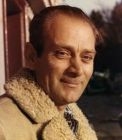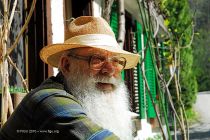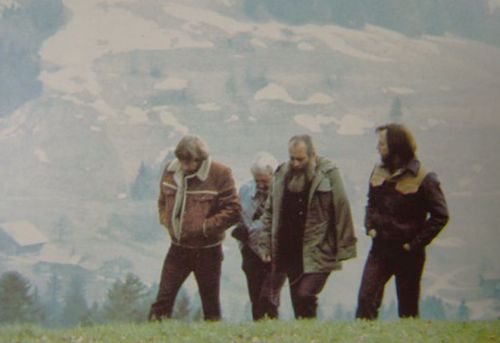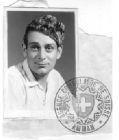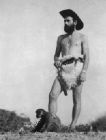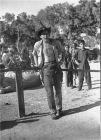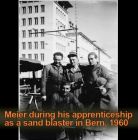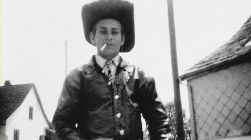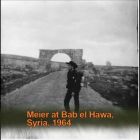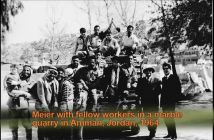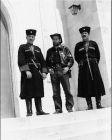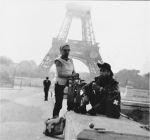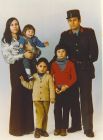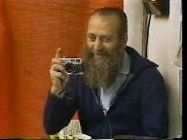Difference between revisions of "Eduard Albert Meier"
Liliana LL (talk | contribs) |
Liliana LL (talk | contribs) |
||
| Line 2: | Line 2: | ||
<div style="float:left">__TOC__</div> | <div style="float:left">__TOC__</div> | ||
<br> | <br> | ||
| − | {{Quote2|right|...Según el Islam, soy un no creyente religioso y, desde la perspectiva del cristianismo, un hereje y ateo, o, desde una perspectiva diferente y sectaria, alguien que está perdido y es candidato al infierno, etc., porque me alejo de toda creencia religiosa y sectaria. [[Image:Billy 95.gif|right]]En consecuencia, no he sucumbido al engaño de Dios, que se les inculca a los creyentes, de manera adoctrinadora, a través de las falsas enseñanzas de las religiones y de todas sus sectas.|[[Islamistic_Terrorists_Do_Not_Represent_Islam_just_as_terrorists_of_other_faiths_do_not_represent_the_other_religions|''Billy, | + | {{Quote2|right|...Según el Islam, soy un no creyente religioso y, desde la perspectiva del cristianismo, un hereje y ateo, o, desde una perspectiva diferente y sectaria, alguien que está perdido y es candidato al infierno, etc., porque me alejo de toda creencia religiosa y sectaria. [[Image:Billy 95.gif|right]]En consecuencia, no he sucumbido al engaño de Dios, que se les inculca a los creyentes, de manera adoctrinadora, a través de las falsas enseñanzas de las religiones y de todas sus sectas.|[[Islamistic_Terrorists_Do_Not_Represent_Islam_just_as_terrorists_of_other_faiths_do_not_represent_the_other_religions|''Billy, Los terroristas islamistas no representan al Islam, Junio de 2010'']]|38}} |
<br clear=all> | <br clear=all> | ||
===Introduction=== | ===Introduction=== | ||
Revision as of 05:31, 9 January 2022
“ ...Según el Islam, soy un no creyente religioso y, desde la perspectiva del cristianismo, un hereje y ateo, o, desde una perspectiva diferente y sectaria, alguien que está perdido y es candidato al infierno, etc., porque me alejo de toda creencia religiosa y sectaria.
En consecuencia, no he sucumbido al engaño de Dios, que se les inculca a los creyentes, de manera adoctrinadora, a través de las falsas enseñanzas de las religiones y de todas sus sectas.
”
Billy, Los terroristas islamistas no representan al Islam, Junio de 2010
Introduction
Aqui encontraras una corta biografia que ofrece una breve introduccion sobre el curso de la vida de "Billy" Eduard Albert Meier. A continuación también se pueden encontrar breves extractos biográficos. [show / hide]
- Biography is an account of someone's life written by someone else. Lengthier biographies are available on the Downloads page under ebooks and 'relevant books by other authors' section.
- Bibliography is a list of the books of a specific author. It can be found under the Short Bibliography, Books, Booklets, Contact Reports, FIGU Bulletins, FIGU Special Bulletins, FIGU Open Letters, Letters from Billy, official FIGU websites and Downloads sections, and several other places.
- Autobiography is an account of a person's life written by that person. Several of Billy's books are autobiographical but most have not been translated from German, see shop.figu.org.
- Interviews are face to face recorded discussion. They are typically informal in a casual setting with Billy, both because we and he himself prefers it that way and its more comfortable. The Interviews with Billy page has some. However Billy has given more formal interviews for television and media in the past, see downloads, ebooks, 'relevant newspaper and magazine articles by other authors' section for a limited selection and other are available on Youtube.
- Memoirs is a historical account or autobiography written from personal knowledge. See Books section and shop.figu.org. Less of these texts have been translated into English because Eduard's written works about humanity have been deemed a higher translation priority divvied among the limited number of translators that exist. If you can read German, enjoy a much richer account of Billy's interesting life.
Quien es Billy Meier?
'Billy' Eduard Albert Meier (BEAM), el controvertido autor y maestro, nació en Bülach, Suiza, el 3rd de Febrero, de 1937 y actualmente reside en Semjase-Silver-Star-Center (SSSC), Hinterschmidrüti, Suiza, que el ayudo a construir y establecer. Durante más de 80 años ha estado comunicándose regularmente cara a cara y telepatia con seres humanos extraterrestres, educándolo inadvertidamente, y publicando esa información con gloriosos detalles. Como se podría prever a lo largo de una cantidad de tiempo tan brillante para un suceso sin precedentes relacionado con los OVNIs; se ha conseguido explicar todo en su totalidad, aclarando toda la historia, con hechos, opiniones y perspectivas extraordinariamente interesantes que han surgido a lo largo de las décadas. Convirtiéndolo en una persona completamente interesante. Todo ello ha sido lo suficientemente incitante como para iniciar a muchos miles de lectores de todo el mundo a leer todo y a interesarse por su historia y su vida. Ha tenido una vida rica en todo tipo de experiencias y logros, en muchos países, muchos de los cuales fueron difíciles, muchos completamente normales y aburridos también, sin embargo, personalmente importantes y útiles parar su evolucion mision en la vida. Es uno de los pocos individuos que han hecho pública toda su vida, aunque es un hombre relativamente reservado que evita el espectáculo: una cantidad razonable de sus obras escritas tienen un tono algo serio, y tratan de asuntos sustanciales de gran valor e importancia.
Eva Bieri Eva Bieri lo describe mejor, en su artículo, A Word About Billy
- ca.figu.org: Billy's Contacts (external)
Introduccion a Billy en Ingles por FIGU Canada.
- au.figu.org: BEAM (external)
Introduccion a Billy en Ingles por FIGU Australia.
- theyflyblog: About Billy (external)
Introduccion a Billy en Ingles por Michael Horn en U.S.A
- Nature'sWay: Quien es Billy Meier (Youtube)
Dubhaltagh O Hearcain lee una pagina del libro ‘And Yet They Fly!’ by Guido Moosbrugger.
- CreationalTruth: About Billy Meier (external)
Introduccion a Billy en Ingles por United States Online FIGU-Interessengruppe für Missionswissen.
| Keyword Index: |
BEAM en algunos momentos de su vida
En fotografias...
|
|
Sobre sí mismo, en sus propias palabras
El propio Billy Meier en su Misión
Fuente: https://www.figu.org/ch/verein/wir-ueber-uns/ueber-billy-meier/billy-ueber-seine-mission
Fuente de traduccion: https://creationaltruth.org/FIGU/FIGU-Society/About-Billy-Meier/Billy-About-his-Mission - adjusted
| British English | Schweizer Standarddeutsch |
Billy Meier en su misión |
Billy Meier en su misión |
| Desde muy temprana edad, me interesó especialmente la vida en todos sus aspectos. Esto incluía también las conexiones con la naturaleza y todo lo creativo en general, que por supuesto también incluía profundos aspectos filosóficos. Sin embargo, lo creativo en sí mismo y en particular, tenía un valor muy especial para mí, por lo que representaba el área principal de pensamiento para mí. Así que profundicé en estas amplias inquietudes en cada oportunidad posible y me encontré con preguntas que los adultos no podían responder por mí, o sólo parcialmente y nunca de forma satisfactoria, hasta que encontré las respuestas por mí mismo, elaboradas desde mi interior, pero que también aparecían cada vez más a menudo a través de algunas fuerzas inspiradoras. | Mein ganz spezielles Interesse galt schon von sehr früher Kindheit an dem Leben in allen seinen Belangen. Dazu gehörten auch die Zusammenhänge mit der Natur und allem Schöpferischen überhaupt, worin natürlich auch tiefgründige philosophische Aspekte miteinbezogen waren. Das Schöpferische an und für sich sowie im besonderen jedoch war von ganz speziellem Wert für mich, so es für mich das hauptsächlichste Gedankengebiet darstellte. So vertiefte ich mich bei jeder möglichen Gelegenheit in diese weitumfassenden Belange und stiess auf Fragen, die mir von den Erwachsenen nicht oder nur teilweise und nie befriedigend beantwortet werden konnten - bis ich dann eben jeweils die Antworten selbst fand, herausgearbeitet aus mir selbst, jedoch auch immer öfter in Erscheinung tretend durch irgendwelche inspirative Kräfte. |
| Así, mi conocimiento de lo creativo, lo espiritual y la conciencia, así como de las leyes y mandamientos creativos, aumentó cada vez más, de lo que resultó que estas cosas se convirtieron en la parte predominante de mi vida. Esto, a su vez, me llevó a tomar conciencia de mí mismo y a darme cuenta de que tenía una misión que cumplir en este campo aquí en la tierra, que es de gran importancia para la evolución de los pueblos de la tierra en términos de conciencia espiritual. Así que empecé a averiguar el cómo, el dónde y el por qué de este hecho y descubrí que había estado activo en esta misión durante muchos millones e incluso miles de millones de años, a lo largo de innumerables reencarnaciones. Me di cuenta de que era un heraldo erudito e instruido en materia de "enseñanza del espíritu", "enseñanza de la conciencia", "enseñanza de las leyes y mandamientos creativos-naturales" y "enseñanza de la evolución", etc. Y este fue el camino que tuve que recorrer. Tenía que seguir el camino del cumplimiento de la misión, pero para ello necesitaba primero una gran ayuda de seres que no eran de naturaleza terrenal, sino de alta naturaleza espiritual y material-exterrenal. Así, con el paso del tiempo, se me concedió esta ayuda para que pudiera empezar a cumplir mi misión. Y esta ayuda llegó cuando todavía era un niño que ni siquiera iba a la escuela. Vino de las profundidades del espacio exterior en forma de un extraterrestre que fue mi primer gran maestro y a través del cual adquirí en poco tiempo un inmenso conocimiento de la Creación y sus leyes y mandamientos, así como de las leyes de la naturaleza y los hechos e interrelaciones de la conciencia espiritual y material, etc. | So stieg mein Wissen um das Schöpferische, Geistige und Bewusstseinsmässige sowie um die schöpferischen Gesetze und Gebote immer weiter an, woraus sich ergab, dass diese Dinge zum überwiegenden Teil meines Lebens wurden. Das wiederum führte dann dazu, dass ich mir meiner selbst bewusst wurde und erkannte, dass ich auf diesem Gebiet hier auf der Erde eine Mission zu erfüllen hatte, die von bedeutender Wichtigkeit für die Evolution der Erdenmenschen in geistig-bewusstseinsmässiger Hinsicht ist. Also begann ich das Wie, Wo und Warum dieser Tatsache zu ergründen und fand heraus, dass ich in dieser Mission schon seit vielen Jahrmillionen und gar Jahrmilliarden tätig war, über unzählige Reinkarnationen hinweg. Ich erkannte, dass ich ein gelehrter und belehrter Künder war in Sachen 'Lehre des Geistes', 'Lehre des Bewusstseins', 'Lehre der schöpferisch-natürlichen Gesetze und Gebote' und 'Lehre der Evolution' usw. Und diesen Weg musste ich beschreiten. Ich musste den Weg der Missionserfüllung gehen, doch dazu bedurfte ich erstlich einer grossen Hilfe von Wesenheiten, die nicht irdischer Natur waren, sondern hoher geistförmiger sowie auch materiell-ausserirdischer Natur. Also ergab es sich im Laufe der Zeit, dass mir diese Hilfe zuteil wurde, so ich meine Mission zu erfüllen beginnen konnte. Und diese Hilfe kam, als ich noch ein kleiner Junge war, der noch nicht einmal zur Schule ging. Sie kam aus den Tiefen des Weltenraumes in Form eines Ausserirdischen, der mein erster hoher Lehrer war und durch den ich in kurzer Zeit ein immenses Wissen erlangte im Bezuge auf die Schöpfung und ihre Gesetze und Gebote sowie die Naturgesetze und die Fakten und Zusammenhänge des Geistes und des materiellen Bewusstseins usw. |
| En el transcurso del tiempo conocí la historia del pasado de mi forma espiritual, que a lo largo de muchos miles de millones de años y reencarnaciones había aparecido repetidamente como una nueva personalidad en varios mundos de diferentes galaxias en el vasto universo como maestro y misionero en asuntos de las enseñanzas del espíritu, de la creación, de la vida, de las leyes y mandamientos creativos-naturales y de la evolución. Me di cuenta de que la primera personalidad de mi forma espiritual llevaba el nombre de Nokodemjon y ya había entrado en el plano espiritual puro Arahat Athersata, desde donde, sin embargo, regresó a los mundos materiales y comenzó la misión de enseñanza que continúa hasta hoy y continuará durante mucho tiempo. En el curso de posteriores reencarnaciones, Nokodemjon o su forma espiritual se convirtieron en otras personalidades, que por ejemplo llevaban nombres como Enok y Enoch, etc., y que nacieron una y otra vez como nuevas personalidades hasta el presente, pero la forma espiritual siempre permaneció igual. Y así, por el momento, el último renacimiento de esta forma espiritual es mi personalidad como "Billy" Eduard Albert Meier, quien, como heraldo de la era moderna, vuelve a enseñar la doctrina del espíritu entre las personas terrestres, y que es una persona de contacto en la tierra con personas de origen extraterrestre, concretamente con extraterrestres que se llaman a sí mismos pleyadianos en su propio idioma, mientras que en los idiomas terrestres se llaman pleyadianos. Sus mundos natales son las Pléyades, que están situadas a unos 80 años luz más allá de nuestras estrellas conocidas de las Pléyades, en un universo de dimensiones diferentes, en una estructura espacio-temporal diferente que está desplazada una fracción de segundo en comparación con nuestro universo. Las estrellas Pléyades de la constelación de Tauro, situadas en nuestro universo, son todavía demasiado jóvenes, con 62 millones de años, y, como bolas de fuego ardientes, incapaces de albergar ninguna forma de vida material o inmaterial, ni siquiera puramente espiritual.. | Im Laufe der Zeit lernte ich die Geschichte der Vergangenheit meiner Geistform kennen, die über viele Jahrmilliarden und Reinkarnationen hinweg immer wieder als neue Persönlichkeit auf verschiedenen Welten verschiedener Galaxien im weiten Universum in Erscheinung getreten war als Lehrer und Missionsausübender in Sachen der Lehre des Geistes, der Schöpfung, des Lebens, der schöpferisch-natürlichen Gesetze und Gebote und der Evolution. Ich erkannte, dass die früheste Persönlichkeit meiner Geistform den Namen Nokodemjon trug und bereits eingegangen war in die Reingeistebene Arahat Athersata, von wo aus sie jedoch in die materiellen Welten zurückkehrte und die belehrende Mission begann, die bis heute andauert und noch sehr lange Zeit andauern wird. Im Laufe weiterer Reinkarnationen wurde Nokodemjon resp. seine Geistform zu anderen Persönlichkeiten, die z.B. Namen wie Henok und Henoch usw. trugen und die bis in die heutige Zeit immer wieder als neue Persönlichkeiten geboren wurden, wobei jedoch die Geistform immer dieselbe blieb. Und so ist die vorerst gegenwärtig letzte Wiedergeburt dieser Geistform meine Persönlichkeit als 'Billy' Eduard Albert Meier, der ich als Künder der Neuzeit neuerlich die Lehre des Geistes belehre unter den Erdenmenschen, und der ich eine Kontaktperson auf der Erde zu Menschen ausserirdischer Herkunft bin, und zwar zu Ausserirdischen, die sich selbst Plejaren nennen in ihrer eigenen Sprache, während sie in den irdischen Sprachen Plejadier genannt werden. Ihre Heimatwelten sind die Plejaren resp. Plejaden, die sich rund 80 Lichtjahre jenseits unserer bekannten Plejadengestirne in einem andersdimensionierten Universum befinden, in einem zu unserem Universum um einen Sekundenbruchteil verschobenen anderen Raum-Zeit-Gefüge. Die sich in unserem Universum befindenden Plejadengestirne im Sternbild Stier nämlich sind mit 62 Millionen Jahren noch viel zu jung und als lodernde Feuerbälle unfähig, irgendwelche materielle oder immaterielle Lebensformen zu tragen - auch keine rein geistigen. |
Por 'Billy' Eduard Albert Meier
SSSC, 19 de Enero del 2005, 00:15 Billy
Fuente: http://beam.figu.org/artikel/1546407724/gutes-wirken - BEAM Portal
Translation source: http://au.figu.org/content/FLAU%20B-21.pdf - FIGU-Landesgruppe Australia FLAU Buletin Numero 21, Julio 2019
| British English | Schweizer Standarddeutsch |
Buen trabajo ... |
Buen trabajo ... |
| Cuando tuve que luchar con obstáculos de todo tipo, cuando luché con gran dificultad contra mi existencia, cuando las fuerzas de mis pensamientos y sentimientos y las fuerzas de mi voluntad y de mi cuerpo amenazaron con abandonarme, cuando la moral y toda esperanza empezaron a hundirse y todo en mí se hizo muy e infinitamente difícil para perseverar en la vida y cumplir con mi deber y mi responsabilidad, Entonces busqué mis sentimientos y emociones más secretas, que me susurraban como una suave brisa que hay indeciblemente pocas personas felices y contentas aquí en la tierra, porque todas están atormentadas por una pena y un dolor inconmensurables y por problemas y preocupaciones que son incapaces de dominar. Cuánto peor que yo -la comprensión creció en mí- deben estar estas personas. Pero al igual que yo, todos ellos sólo pueden encontrar la salida a toda su miseria si trabajan el bien en sí mismos, si se dedican a la reflexión y a través de ésta a la fuente del conocimiento, que crea una liberación de todas las dificultades y males, de la pena, el dolor, los problemas y las preocupaciones. Esta realización descansa en la constatación de todas las cosas, de que todo merece la pena ser vivido, tanto lo negativo como lo positivo, y de que es la vivencia de lo agradable como de lo desagradable lo que hace que la vida merezca la pena ser vivida y aporte experiencias, vivencias y valores inconmensurables. La misión de la vida, a saber, evolucionar en conciencia, y el cumplimiento de esta misión es la fuente de la que el apenado, el afligido, el agobiado por los problemas, el cargado de trabajo y el agobiado por las preocupaciones extrae constantemente nuevas fuerzas, momentos de paz y relajación, alegría, amor, armonía y paz. Esta es mi realización, y me enseña que cuando el bien se trabaja conscientemente, entonces el bien se vuelve omnipresente. | Wenn ich mit Hindernissen aller Art zu ringen hatte, wenn ich mich sehr mühsam meinem Dasein entgegenstemmte, wenn mich die Kräfte meiner Gedanken und Gefühle und die Kräfte meines Willen und des Körpers zu verlassen drohten, die Moral und alle Hoffnung zu sinken begannen und in mir alles sehr und unendlich schwer wurde, um im Leben auszuharren und unbeirrt meine Pflicht zu tun und meine Verantwortung wahrzunehmen, dann suchte ich nach meinen geheimsten Empfindungen und Gefühlen, die mir wie ein leiser Hauch zuflüsterten, dass es hienieden auf Erden unsagbar wenige frohe und zufriedene Menschen gibt, weil sie alle von unermesslichem Gram und Kummer sowie von Problemen und Sorgen verfolgt werden, denen sie nicht Herr zu werden vermögen. Wie sehr viel schlimmer als ich – so wuchs stets die Erkenntnis in mir – müssen doch diese Menschen dran sein. Doch wie ich, können sie alle aus ihrem ganzen Ungemach nur herausfinden, wenn sie in sich Gutes wirken, wenn sie sich der Besinnung und sich durch diese der Quelle der Erkenntnis hingeben, die eine Befreiung von allen Nöten und Übeln, von Gram, Kummer, Problemen und Sorgen schafft. Diese Erkenntnis ruht in der realen Veranschaulichung aller Dinge, dass alles lebenswert ist, und zwar sowohl das Negative wie auch das Positive, und dass erst das Ausleben des Erfreulichen wie Unerfreulichen das Leben lebenswert macht und unermessliche Erfahrungen, Erlebnisse und Werte bringt. Die Mission des Lebens, nämlich im Bewusstsein zu evolutionieren, und die Erfüllung dieser Mission ist die Quelle, aus der der sorgenvolle der gramgebeugte sowie der kummergeplagte, der problembedrückte sowie der arbeitsbelastete und sorgenkranke Mensch stetig neue Kräfte, Augenblicke der Ruhe und Erholung, der Freude, Liebe, Harmonie und des Friedens schöpft. Das ist meine Erkenntnis, und diese lehrt mich, dass, wenn bewusst Gutes gewirkt wird, dann das Gute allgegenwärtig wird. |
SSSC, 19 de Enero del 2005, 00:15 Billy |
SSSC, 19. Januar 2005, 00.15 h Billy |
Por 'Billy' Eduard Albert Meier
Años luz de Gary Kinder (Extracto)
Una descripción de Eduard Meier que se encuentra en un libro llamado Años luz escrito por Gary Kinder que trata sobre él y su vida; en la sección Uno A.
Pero a poca distancia del centro del pueblo, a lo largo de la calle Wihaldenstrasse, se levanta una granja de tres plantas construida hace cien años. A mediados de la década de 1970, las vides de uva de verano trepaban por la soleada pared sur de la vieja casa. Las flores llenaban un abrevadero de piedra al norte, cerca de la entrada, y pequeños pájaros revoloteaban en una pajarera construida con madera y alambre. Al sur y al este de la casa había un pequeño campo verde, y al norte y al oeste había más edificios de apartamentos institucionales y fríos.
La comunidad de Hinwil había adquirido la antigua granja años antes y había construido los apartamentos de alrededor para alojar a personas mayores. Aunque la granja pronto sería derribada para hacer sitio a más apartamentos, la comunidad alquilaba ahora la casa por una suma simbólica a un vigilante nocturno en paro, Eduard Meier. Meier vivía en la casa con su esposa griega, Kaliope, apodada Popi, y tres niños pequeños: una niña, Nina, un niño, Atlantis, y el bebé, Bashenko. Vivían en la casa desde diciembre de 1973, aunque desde hacía dos años vivían en otro lugar de Hinwil.
Meier, un hombre de treinta y siete años, tenía una educación de sexto grado. No era un hombre muy grande, tal vez 1,65 metros de altura, pero era de pecho grueso y fuerte. Su rostro era apuesto, resaltado por unos inusuales ojos verde-azelados. Según los registros del pueblo, las profesiones de Meier eran "criador de pájaros, colocador de hierro, vigilante nocturno". Tenía permiso para llevar un arma porque había trabajado como vigilante nocturno en una fábrica.[continue reading]
Meier had kept a cage out back filled with nearly two hundred birds. He had been employed then as a night guard and, consequently, was often at home during the day. But many people in the neighbourhood avoided talking to Meier because he was "different." He spoke a great deal about Moses and said things other people did not understand. Julios and Erika Kagi knew the Meiers better than other neighbours did because they had a daughter the same age as Nina and the two girls often played together. "He had a terrific fantasy," remembered Erika Kagi, "and I could not agree with his philosophy. But he was not a bad person. He was not even odd; he just had his own ideas and believed whatever he said." Said another neighbor, "Meier lives the way he wants to and does not adapt to anyone else's way of living."
Meier had only one arm. His left arm had been severed just above the elbow in a bus accident in 1965, as he traveled from India, through Turkey, and back to Switzerland. Still, when part of the barn adjacent to the small house collapsed, Julios Kagi saw Meier rebuild the wall alone by holding the boards in place with his shoulder stump while he positioned and pounded nails with his one hand. "He was faster with one hand than other people are with two," recalled Kagi.
Again out of a job, Meier now supported his family on the 700 francs provided him every month by the government for the loss of his arm. To supplement their income, the Meiers kept chickens in the attic of the old farmhouse, and Popi sold eggs to the neighbors. To neighbors living in the apartment buildings overlooking the front door of the farmhouse, Meier seemed to be always home. In a culture that values hard work and conformity, the neighbors saw him as a singular and idle man, often lost in thought, as though the weight of the world rested upon his shoulders, and they began to talk.
Then, on the afternoon of 28 January, 1975, a cold day but warmer than most at that time of the year, Eduard Meier left the farmhouse on his moped, towing a tiny wagon behind him. He wound through the streets of Hinwil, steering with one hand, the empty left sleeve of his leather jacket jerking in the wind. Working his way out of town, he eventually came to a country road, which he followed for a time, then disappeared into the forest of a nature conservancy. A few hours later, he returned to the farmhouse without telling anyone where he had been.
Several days passed, during which the neighbours saw Meier dawdling around the house, seemingly as always without purpose. Then, one afternoon, he again pulled his moped from a storage room, pedalled it down the driveway until the tiny motor kicked over, and rode through the village out into the country. Soon, he was lost from view in another of the islands of forest surrounding Hinwil. When he returned, as before, he told no one where he had been or why he had been there. But the Swiss are observant and curious people, and the neighbours noted his peculiar comings and goings.
Within weeks, Meier was travelling regularly into the forest, guiding his moped with one hand, the tiny wagon behind. Each trip seemed to take him along a new path in a new direction through town and out into the country highways, often for as long as an hour. Later, many of his trips took him into the hills. Sometimes, he would disappear in the early afternoon and not be seen again before supper; other times, he would sneak from the house at one or two in the morning and not return till dawn.
"He had to go away again and again," Popi remembered. "He would come home for five minutes, fix himself a cup of coffee, and hop, he was gone again. It was bad at night. You'd be sleeping peacefully and the kids were quiet in bed. All of a sudden, he would get up, get dressed, and be gone. You know? You think your husband is lying in bed next to you, but he is gone. I did not know anything. All he said was that he was going to work."
As the weeks passed, Meier's journeys through town and into the forests began to occur three, four, even five times a week. And his frequent departures rubbed against the grain of order and routine so conscientiously observed by his neighbours. The more he disappeared, the more they talked.
"The people in the neighbourhood didn't know any thing about what was going on," said Popi, "but they were very curious. They could tell me, to the minute, when he left on his moped and when he came back. It was always the same questions. 'Why did he come home so late?' Sometimes he got up in the middle of the night and left, so they would hear the moped. And when he did this, it was even worse with the people the next day. 'Why did he leave last night?' 'Where did he go?' I would say nothing. I wasn't interested. They are just Schnuriwiiber [gossips]."
On clear nights, neighbours living in the apartment building just above the farmhouse saw Meier standing in the alleyway to the west and watching the sky through binoculars for hours. On nights when he did not leave the house, neighbours to the east saw a light burning on the second floor late into the night.
A week, a month, maybe two months passed, Popi could not remember. Then, one afternoon, as the two of them stood in the small living room on the second floor of the house, her husband handed her photographs.
"What do you think of this?" he asked.
But Popi only stared at the pictures.
"I was shocked," she recalled, "because I saw something completely new, and I did not want to believe that this existed. He said nothing at all. Didn't explain. Not one word." Her husband merely picked up the pictures and left the room, as Popi yelled at him for wasting his time taking pictures when money for the family was so scarce.
Meier next took the photographs to his friend Jakobus Bertschinger, whom he had met while working at the Piatti gravel pit years earlier. Though Jakobus was twelve years younger than Meier, the two men had struck up a lasting friendship. They spent much time together, talking about Meier's experiences during the twelve years he had travelled back and forth through India and the Middle East. But Jakobus, too, seemed confused by the photographs Meier showed to him. He even laughed, but he promised to help his friend in any way he could. With a loan from Jakobus, Meier placed a small classified ad in the German publication Esotera. The ad solicited people interested in forming a group to discuss natural life, logic, and truth-things "metaphysical."
Several more months passed. Through the summer and fall of 1975, the neighbours along Wihaldenstrasse watched Meier continue his frequent trips into the foothills and forests at all times of the day and night. On his little green moped, he often was seen at the edge of the open road, putt-putting along, twenty, maybe twenty-five miles an hour, passed constantly by the much larger and faster automobiles. But then, something new entered Meier's routine: one Saturday afternoon, a half-dozen cars appeared at the farmhouse and remained till late at night.
The neighbours did not understand why people came to see this man. He was poor and handicapped, with an unkempt wife who spoke little of their language. He did not work, and his habits seemed strange. But over the weeks and months, not only did the visitors continue to come, but their numbers increased. In the tiny parlor on the second story, the man with the single arm and unusual hazel eyes spoke to these people for hours. When they left, the neighbours heard Popi screaming at him. For many months, the neighbours watched Meier disappear frequently at odd hours and saw the cars on Saturday afternoons filling the narrow alleyway, running alongside No. 10 Wihaldenstrasse, and spilling onto the streets of Hinwil."
Por Gary Kinder
Fuente: Light Years Gary Kinder PDF (external)
BEAM en otras épocas de su vida
En fotografias...
Further Reading
- Christian Frehner
- Guido Moosbrugger
- Wendelle Stevens
- Jim Dilettoso
- James Deardorff
- Michael Hesemann
- Michael Horn
- Lee Elders
- Benjamin Stevens
- Category:People
- Gary Kinder
- Hans-Georg Lanzendorfer
- Jeroen Jansen
- Keith S Cornish
- Luis Sanchez
- Marianne Uehlinger Mondria
- Neckel
- Neil. M. Davis
- Peter Brodowki
- Peter Brookesmith
- Philip McAiney
- Rhal Zahi
- Stephen Moore
- Subhabrata Mukhuti
- Thomas Hall
- Vibka Wallder
Links and navigationFuture ![]() f Mankind
f Mankind
- Eduard Meier, Bio, Why him?
- Interviews, Witnesses
- Spirit Teaching, Introduction
- FIGU, SSSC
- Books, Booklets, His Work, Biog
- Contact Reports, Sfath's, Asket's
- FIGU Bulletins
- FIGU Open Letters, from Billy
- FIGU Special Bulletins
- FIGU Zeitzeichen
- Recent Changes
- Search
- Photo Gallery, Art Gallery
- Overpopulation
- Prophecies and Predictions
- Peaceful Music
- Audio Evidence
- Expert Opinions and Science
- Photographic Evidence
- Physical Evidence
- Earth Event Timeline
- Psyche, Consciousness and Ratio
- Beamships, Atlantis, Planets
- Learning German
- Downloads, Video, Audio
- FIGU terms, Other Authors
- Reincarnation, Human, Brain
- Spirit, Supernatural, Telepathy
- Evolution, Creation, Religion
- Gaiaguys Web, TJResearch
- Telekinesis, Psychotelekinesis
- Unconsciousness, Materialkinesis
- Bigfoot, Easter Island, Pyramids
- Block of Mentality, Placebo
- Contact Statistics, Book Statistics
- External Links, Rare Archives
- Articles by others, Category view
- Community, Polls, External Links
- Site Index, Categories
- WhatLinks, LinkedChanges
- Index, Meier Encyclopedia
- Website statistics
- Random page
- Special pages
- Contributing Content, Roadmap
- Upload file
- How can I help?
- User help
| Contact Report Index | Meier Encyclopaedia |
|---|---|
| n A B C D E F G H I J K L M N O P Q R S T U V W X Y Z | 0-9 A B C D E F G H I J K L M N O P Q R S T U V W X Y Z |
